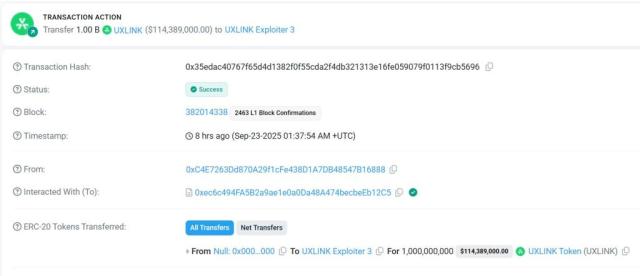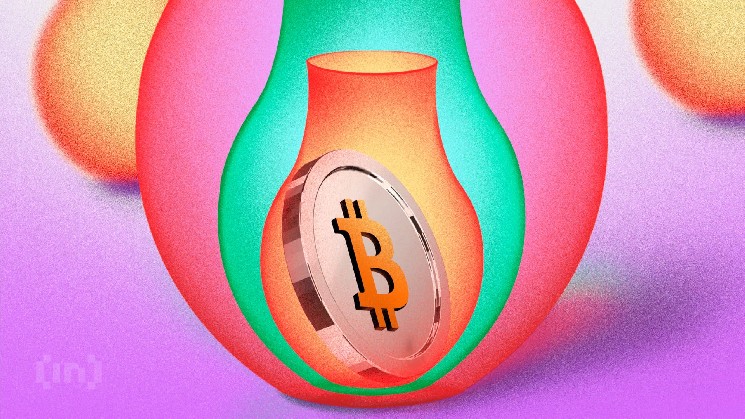Written by Thejaswini MA
Compiled by Luffy, Foresight News
A notice on Crypto Twitter (X Platform) sparked heated discussion: CZ(CZ) removed the "former Binance" logo from his profile.
Prediction markets began to speculate on his chances of receiving a pardon from President Trump, and my X platform timeline was flooded with speculation about the founder's imminent return. Everyone was wondering whether CZ would retake the reins of the world's largest cryptocurrency exchange.
However, while the entire network was closely watching the "digital clues" left by CZ, there was a person who had been quietly in charge of Binance, leading the company through the most dangerous period in its history.
Now, let us tell his story.
Richard Teng has quietly transformed Binance from a compliance nightmare into one of the most well-regulated cryptocurrency exchanges. He took over at the company's darkest hour: facing a $4.3 billion fine, the wrath of regulators, and fundamental questions about its survival. Eighteen months later, Binance boasts record-breaking user numbers, licenses, and institutional partnerships.
The 52-year-old former regulator insists he’s focused on the future, not the past. But his position is more precarious than it appears: his choices to push Binance toward compliance and legitimacy may have eroded its original revolutionary character.
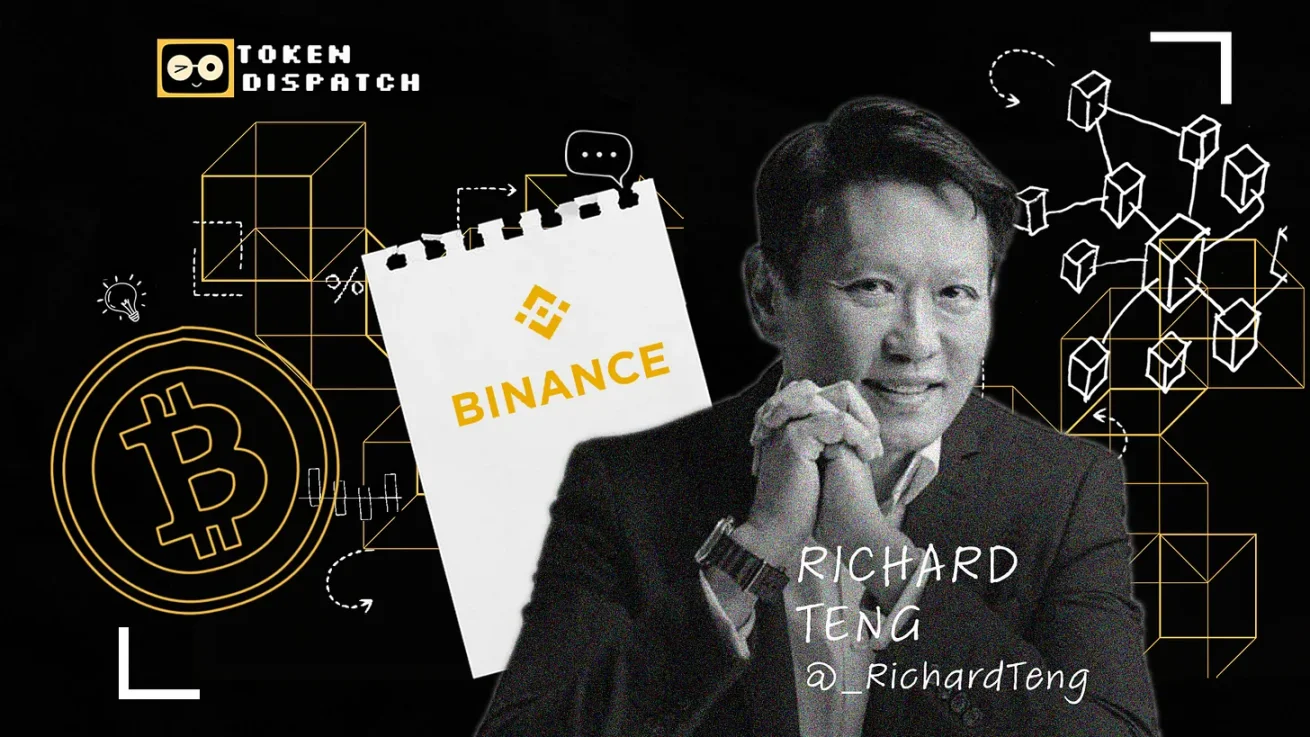
Richard Teng’s cryptocurrency journey began in a highly formal institution: the Singapore government. After graduating with honors in accountancy from Nanyang Technological University in 1994, he spent 13 years as a regulatory official at the Monetary Authority of Singapore (MAS).
Teng comes from a humble background. His mother works at a nursing home, and details about his father are unknown. This government job offers him a sense of security and prestige that his family background could not have afforded him.
During his time at the Monetary Authority of Singapore (MAS), Teng gained a deep understanding of the workings of financial regulation. He helped Singapore transform into a global financial center, participating in the development of regulatory rules that banks must comply with and investigating those that violate them. He believes that sound rules can empower innovation, not stifle it.
In 2015, Teng's career took a significant turn when he moved to Abu Dhabi to head the Financial Services Regulatory Authority within the Abu Dhabi Global Market (ADGM). It was there in 2017 that he first encountered cryptocurrencies and made a career-defining decision: not to ban crypto assets, but to attempt to regulate them.
ADGM became one of the first financial centers to establish comprehensive cryptocurrency regulations. This framework attracted dozens of cryptocurrency companies and earned Teng a reputation as an "enlightened regulator." However, it also marked his transition from a "rule-maker" to a "rule-practitioner." In 2021, Teng joined Binance as CEO of the Singapore region.
A man who has dedicated decades to enforcing financial regulatory rules now works for an exchange that seems to completely disregard them.
When CZ appointed Teng to lead Binance's Singapore operations in 2021, it was widely viewed as a strategic hire. At the time, Binance was facing global regulatory pressure, and Teng's experience was expected to help the company smooth relations with regulators. However, Teng's advancement at Binance surpassed all expectations: in just two years, he went from overseeing a single country to a senior executive responsible for markets in Asia, Europe, and the Middle East. By the end of 2023, he was being considered a potential successor to CZ.
Even so, few expected the sudden transition of power. On November 21, 2023, CZ resigned as part of a plea agreement with US regulators, and Teng was immediately appointed CEO, taking over the company in crisis.
At that time, Binance was facing the largest fine in history from the U.S. Treasury Department, and regulators in many countries were investigating or issuing bans on it. Users were withdrawing their funds due to concerns about the stability of the platform.
Teng had to act quickly.
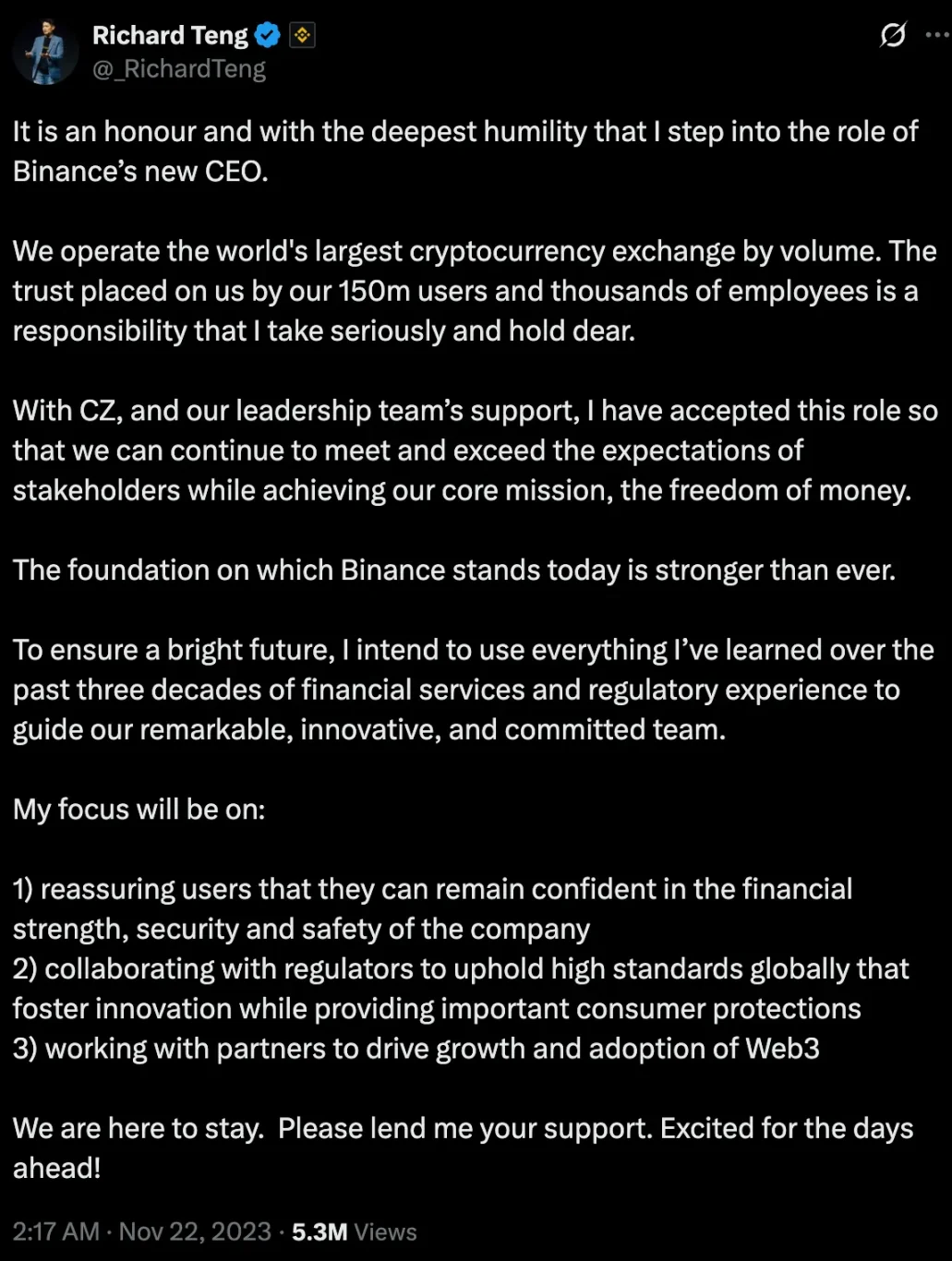
Compliance revolution or compromise and surrender?
Teng’s first priority is obvious: repair Binance’s relationship with regulators.
During CZ era, Binance's operations were almost unconstrained by regulation, and compliance was often seen as an "afterthought." Teng completely changed this model.
He hired hundreds of compliance officers, established the company's first formal board of directors, and invested "hundreds of millions of dollars" in risk management systems . He began working with regulators rather than fighting them.
The results are impressive: Binance now holds regulatory licenses in 21 jurisdictions, more than any other cryptocurrency exchange, and large institutions that once shunned it are now seeking its cooperation.
Critics, however, say Teng went too far, claiming he stripped away much of Binance’s innovation and competitive advantages in order to appease regulators.
Unlike the rapid pace of new token launches during CZ's era, Binance now takes months to complete the listing process. Its stringent compliance procedures have led some projects to choose other platforms for listing. The startup, once known for its "move fast and break things" motto, has now become "slow and rule-abiding."
Teng refuted this assertion, arguing that regulatory compliance is necessary for cryptocurrencies to gain mainstream acceptance.
"We paid a heavy price for this, and I hope other players in the industry can learn from it," he said. "The industry can only develop better if it works together to eliminate bad actors."
Perhaps Teng’s biggest challenge isn’t regulatory pressure or user complaints, but the shadow cast by his predecessor. CZ remains Binance’s largest shareholder and could theoretically return to operations if his legal issues are resolved.
This created an awkward situation: Teng was nominally CEO, but everyone knew his position depended on the will of someone who had officially left the company. Even if CZ was no longer expected to be involved in decision-making, major strategic moves still required his tacit approval.
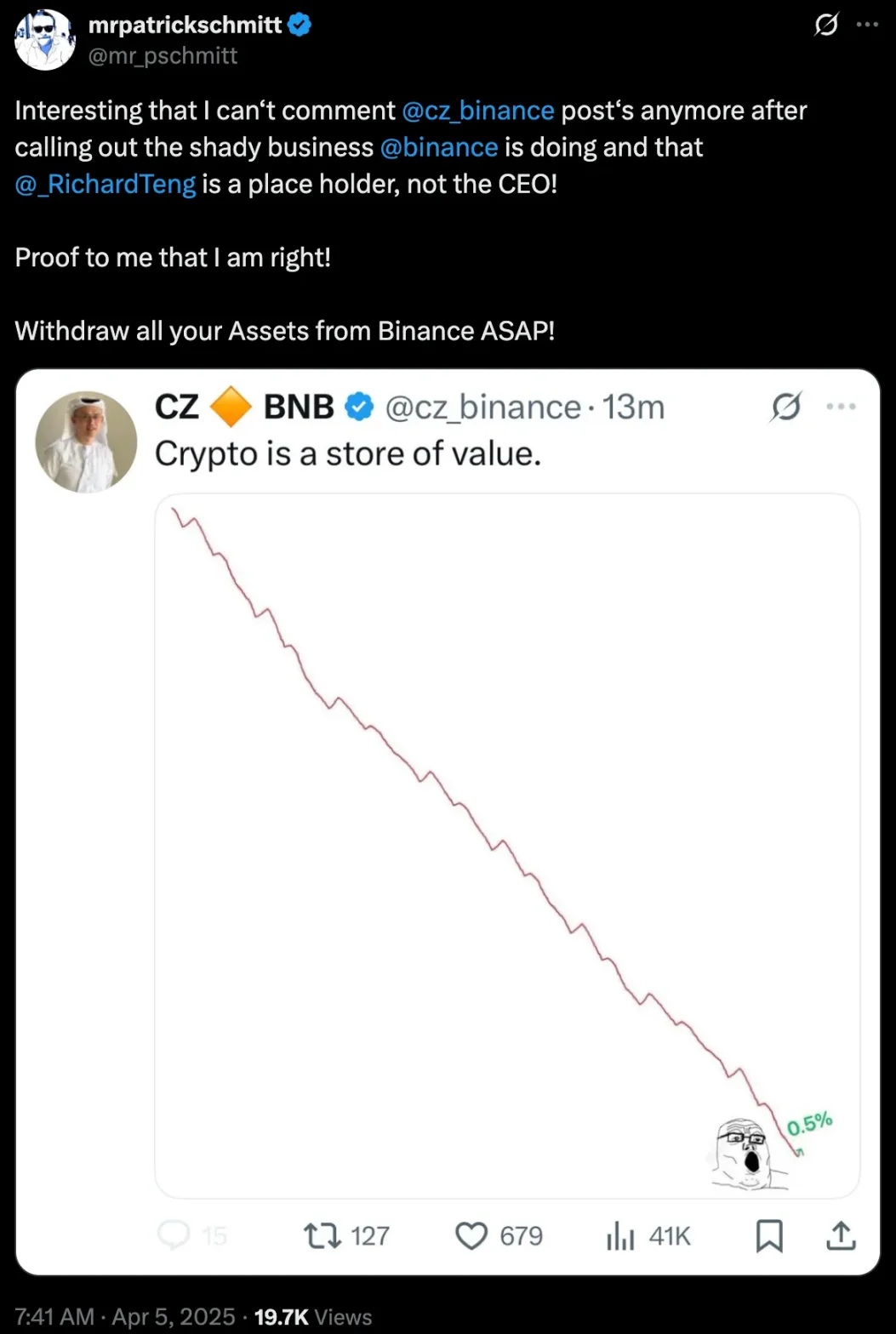
The situation is further complicated by CZ removal of the "former CEO" designation from his social media profiles. Teng insists he's not worried about being replaced, but his position is highly precarious: if CZ does return, what will become of the man who "held the ship" during his absence?

Despite the internal turmoil, Teng has carved out a unique niche as CEO. His core agenda is financial inclusion, leveraging cryptocurrency to serve the billions of people globally excluded from traditional banking.
He often calls cross-border remittances the killer app for cryptocurrency. Traditional remittance services often charge fees of over 10% for cross-border transfers, while cryptocurrency allows for instant transfers with virtually zero fees.
“Over the past few years, especially in many countries experiencing hyperinflation, people’s living conditions have been greatly improved by holding stablecoins,” Teng explained.
By mid-2025, Binance Pay, Binance’s payment service, had processed over 300 million transactions totaling over $230 billion. Teng estimates that this saved users over $1.75 billion compared to traditional remittance services.
This emphasis on practical utility over speculative trading stands in stark contrast to the CZ era. While the previous CEO focused on day traders and yield farming, Teng's target audience is the world's poor and unbanked. While this mission is noble, it also raises questions about priorities: should the world's largest cryptocurrency exchange focus on experienced traders, who generate the majority of its revenue, or provide basic financial services to those who may have never traded before?
Teng’s biggest bet is on institutional adoption. Under his leadership, Binance has actively courted hedge funds, family offices, and traditional financial institutions.
But this institutional orientation requires trade-offs: professional investors expect the same level of service and protection as traditional financial institutions. They require independent custody, insurance coverage and compliance qualifications, all of which require high costs and complex processes to achieve.
Teng believes that institutional adoption will bring legitimacy and stability to the cryptocurrency market, ultimately benefiting everyone. However, the jury is still out on whether the trade-off is worth it.
Being in charge of the world's largest cryptocurrency exchange means being a prime target for hackers. In January 2025, a sophisticated attack on rival Bybit exchange cost the exchange $1.5 billion, serving as a wake-up call for all cryptocurrency platforms.
Teng has made security a core part of his leadership, investing “hundreds of millions of dollars” in building defenses. Binance maintains a $1 billion insurance fund and regularly publishes “proof of reserves” reports.
But some security experts question whether these measures are sufficient: despite the size of the insurance fund, it only covers a small portion of Binance user deposits; and while the reserve proof report provides transparency, it cannot prevent insider attacks or sophisticated hackers.
The Meme Coin Dilemma
Teng faces a constant challenge in balancing token listings. Binance’s choice of listed tokens can skyrocket a project’s valuation to billions of dollars overnight, putting immense pressure on the exchange.
The explosive growth of meme coins and speculative tokens further complicates the situation: millions of new tokens are launched each month, the vast majority of which lack practical utility or long-term prospects. This creates a difficult balance between users’ desire for the latest trends and regulators’ demands for consumer protection.
Teng tried to respond through "community voting" and "more rigorous research", but this approach caused new problems: the listing process became lengthy and costly, and even compliant projects found it difficult to list on the Binance platform.
Some industry observers have noted that some well-funded leading projects have spent over a year on Binance's due diligence process, only to receive listing offers that require them to sell a significant portion of their tokens. This requirement, almost like an equity subscription, can cost projects tens of millions of dollars simply to qualify for listing on the exchange.
But Teng’s team argues that strict requirements are necessary to protect users from “token dumps.” This tension reflects a deeper industry dilemma: how to protect retail investors from scams while providing reasonable market access for compliant projects?
The future and the past
As Teng approaches his second anniversary as CEO, his track record has been mixed. He has undoubtedly stabilized Binance, repaired its relationship with regulators, and maintained user growth and market dominance.
But the crypto industry values bold leadership and risk-taking, traits that often conflict with regulatory compliance. Teng’s cautious approach may work for now, but its sustainability in a rapidly evolving industry is questionable.
The "CZ factor" adds to the uncertainty: If the founder does return, will Teng accept a subordinate role? Will he be completely sidelined? Or will he finally be able to break free from the shadow of others and forge his own legacy?
Teng is facing a core question about Binance’s identity: Is it a “crypto-native platform that happens to follow the rules” or a “traditional financial institution that happens to trade digital assets”?
His answer will not only determine his own fate, but also shape the future of the world's most important cryptocurrency exchange.




